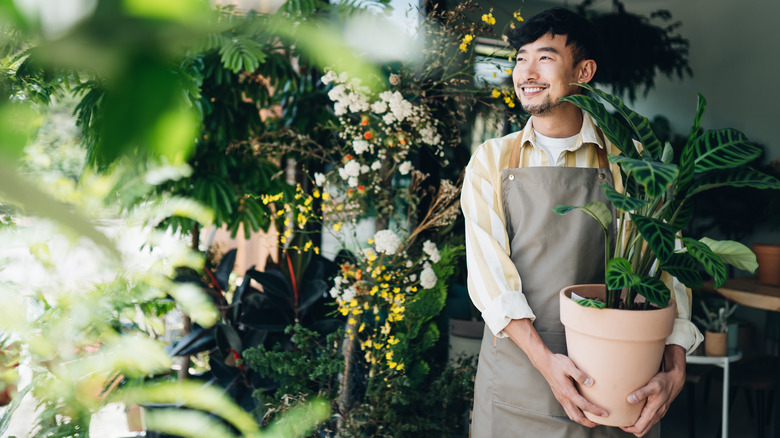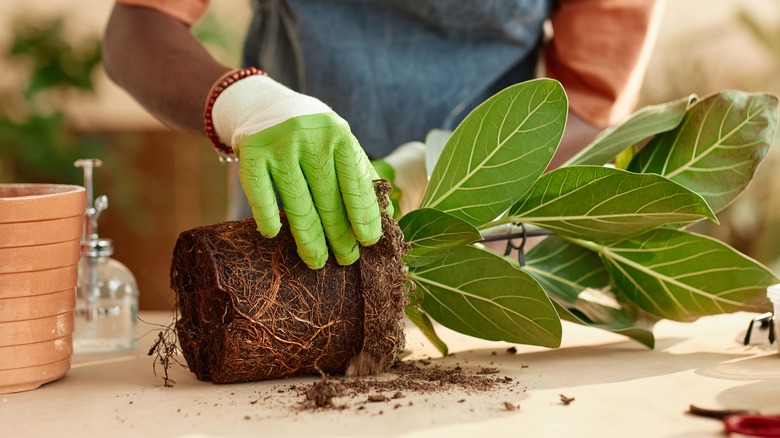The Sneaky Mistake Sellers Make That May Be Killing Your Plants
When you pick out the perfect plant for your home, the excitement of adding a touch of greenery to your space can sometimes overshadow checking for issues. Whether you're newly houseplant-obsessed or not, keep in mind that the roots are the first thing you should check after bringing a plant home from the nursery. When examining your plant, you may notice issues such as pests, signs of root rot, or even an item wrapped around the roots — this is a common yet often unknown issue that can lead to the death of your newest addition. Lurking beneath the soil may be something other than the expected plant parts: rubber bands or other items wrapped around the roots. Without literally digging deep, over time, these silent killers may slowly kill your plant.
Sometimes, sellers combine a few smaller propagations to create a lush appearance. Even more commonly, growers may use mesh or cups to encase the roots, and gardening centers tend to leave them on when transferring the plants to larger pots. While more research needs to be done to determine the effect of these objects on plant roots, anecdotal evidence suggests they can cause a lot of harm. What we do know is that the more roots a plant has, the more they'll be able to absorb nutrients, and the better they'll grow. If the roots are restricted and unable to grow as quickly and easily, the plants may suffer from stunted growth and have a decline in overall health.
What to do if you find rubber bands or mesh cups around the roots
Several experts recommend removing anything that encases the roots. Although there isn't much research to back up the harm of these objects, we also know they aren't necessary for plant growth. Plants typically thrive without any encasements, and instead, they allow their roots to spread in search of water and nutrients. Roots adapt their branching patterns based on soil moisture conditions, which allows them to optimize their water and nutrient intake. By removing any restrictive devices, you allow the plant to develop a healthy root system, which is necessary for its overall health.
Start by flipping the pot upside down, using one hand to keep the pot sturdy and the other to gently but firmly hold the plant in place. Using a twisting motion, allow gravity to pull the plant from its pot. Lay the plant on a flat surface and gently massage the roots to release the soil. Look closely for any materials like fabric, elastic, or plastic. Use a sanitized pair of gardening shears to snip rubber bands, cages, or fabric you find. You may have to cut a few sections before carefully removing them from the roots. Assuming the plant is healthy and not rootbound, use the same soil and pot to replant it.

